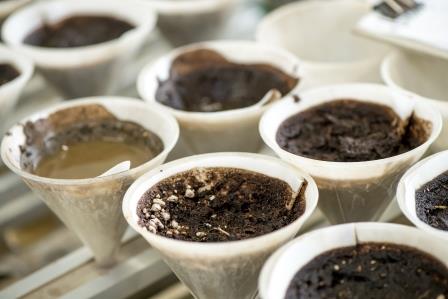Unexpected pH fluctuations in peat substrates
16 December 2019 - Articles
The pH of a peat substrate can change suddenly. This is due to do the substrate's buffering capacity and the interactions between the substrate, the plant and the nutrients present. It is therefore important to always keep a close eye on the pH of the substrate.
Substrates made up of peat and other organic raw materials such as coir pith and wood fibre consist mainly of organic compounds. Organic compounds act as a 'weak acid'. This means that the H+ ions in solution remain in balance with the H+ ions bound to the organic matter. A weak acid, and hence organic matter, thus acts as a buffer on the pH. This inhibits changes in pH due to the uptake of nutrients by the crop. Peat substrates generally have a larger pH buffer than substrates containing more non-peat raw materials.
pH fluctuations
Extra lime is often added to peat substrates to adjust the pH at the start of cultivation. This is important for stable nutrient uptake. If some of the lime does not react, it acts as a buffer that can maintain the pH. But if all of the lime ultimately reacts with the H+ present, the pH can decrease quickly.
Other cations from fertilizers, such as K+, Ca2+, Mg2+ and NH4+, are in balance with H+ on the organic matter. When growing on a peat substrate, changes in EC usually have an effect on the pH because the cations displace the H+ on the organic matter. When starting with a low EC and then increasing the EC, this will cause the pH to decrease. On the other hand, when there is a lot of irrigation, cations leach out and the EC drops, causing the pH to rise.

The composition of the selected fertilizers also has an influence. For example, ammoniacal nitrogen (NH4+) lowers pH whereas nitrate nitrogen (NO3-) has a pH-increasing effect due to plant uptake. In addition, plants themselves also influence pH by selective uptake of ions.
Substrates have a different level of pH buffer because of their 'weak-acid effect'. In a substrate consisting mainly of peat, buffering is stronger than in substrates containing, for example, more coir products or wood fiber. This is why substrates with less peat can show greater pH fluctuations and therefore require more precise control using the nutrient solution. Control using the ratios between NH4+ and NO3- is then necessary to maintain the pH at the desired level.
Interactions
Various interrelated processes come into play in a peat substrate. A change in EC, the choice of a specific fertilizer and the growth and development of the crop sometimes have counteracting effects on the pH. Every crop has an optimum pH at which it develops best. It is therefore important to adjust the pH of the substrate to the crop and to know which factors influence pH. Eurofins Agro can test the pH of the substrate.
To gain a better understanding of the interactions between the peat substrate and the pH and to control pH more accurately, RHP (the the European knowledge centre for growing media) has developed a checklist. Based on the insights , you can decide how to adjust the pH to the optimal level for the culture situation.
Download the pH checklist >
Want to know the pH of the potting soil? Here you can order an analysis >
